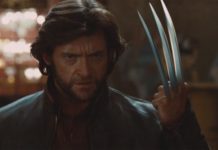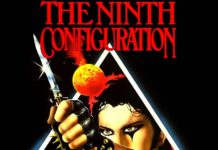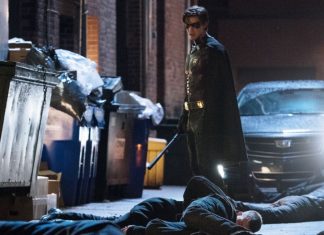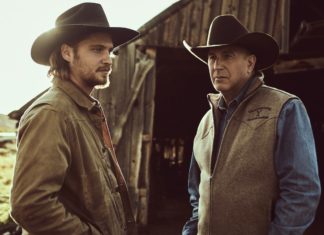According to the internet, The Exorcist made its broadcast television premiere on Tuesday, February 12, 1980, which would have made me nine years old. My mother, who herself had been traumatized by the film during the original theatrical run, decided to give in to my request to stay up late on a school night to watch the movie.
My life was never the same.
To say that I was terrified would be an understatement. I remember her asking me a few times during the film if I was ok, and offering to switch channels to The Swarm, which was showing on another network.
I refused… how would I ever know how the film ended if we turned it off???
I ended up pulling the mattress off of my bed and dragging it into my mother’s room as soon as the film ended. Sleep did not come easily that night, or for many nights to come. I still wake up at night half expecting to see poor, possessed Regan standing next to the bed.
Now that is an effective piece of filmmaking, my friends.
William Friedkin’s 1973 film was adapted from William Peter Blatty’s 1971 novel of the same name. Blatty, until then known as a writer of broad comedies such as John Goldfarb, Please Come Home!, A Shot In The Dark and What Did You Do In The War, Daddy?, decided to finally commit to novelizing a true story of demonic possession that had captured his imagination when he was a student at Georgetown University.

Blatty’s novel centered on Regan MacNeil, the young daughter of well-known actress Chris MacNeil. Amidst a tumultuous move to Georgetown, where Chris is shooting a movie, as well as the collapse of her parents’ marriage, Regan begins manifesting strange symptoms and exhibiting unusual behavior.
Extensive medical and psychiatric tests reveal nothing, but after the strange death of Chris’ director points to Regan, Chris is forced to question her own belief in the supernatural and seek help from the Catholic Church.
After an extensive search that included Directors such as Arthur Penn, Stanley Kubrick, and Mike Nichols, all of whom turned the project down, Warner Bros. finally settled on Mark Rydell (The Rose, Cinderella Liberty).
Blatty, however, had other ideas.
Impressed by the documentary-like realism that William Friedkin brought to The French Connection, and certain that The Exorcist needed the same treatment, Blatty began lobbying hard for a change of directors.
After a tense standoff, Blatty got his way.
Rydell was out, Friedkin was in and horror films would be changed forever.
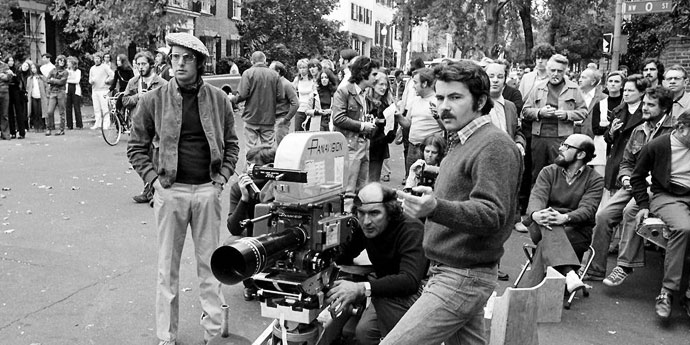
Actresses Pamelyn Ferdin and Anissa Jones were originally considered for the part of the possessed child, Regan, but were ultimately rejected because they were too well-known to viewers. Denise Nickerson, who portrayed Violet Beauregarde in Willy Wonka And The Chocolate Factory, was also up for the part, but the screenplay troubled her parents so much that they pulled her from contention.
The fresh-faced and innocent-looking Linda Blair, then thirteen, was taken to a casting call by her mother, where she impressed Friedkin with her poise and maturity.
Friedkin, worried about the scene where the possessed Regan masturbates with a crucifix, asked Blair if she knew what masturbation was.
“Have you ever done it?”, Friedkin asked.
“Sure. Haven’t you?”
Friedkin had his Regan.
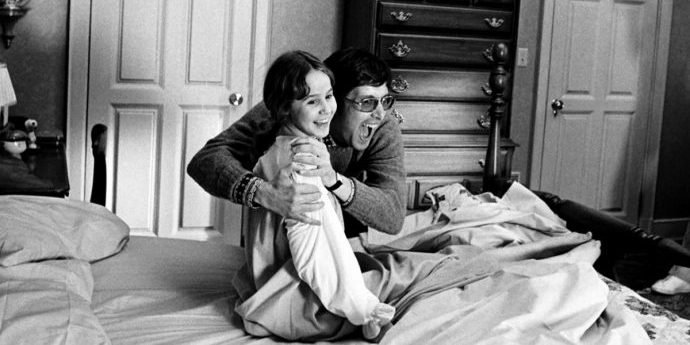
Various other casting options were thrown around before the final cast was set. Warner Bros. wanted Marlon Brando to play Father Merrin, the titular exorcist, but Friedkin shot them down, saying that the film would then become “a Marlon Brando film”.
Jack Nicholson was considered for the part of Father Karras, and Stacy Keach was actually cast, but after attending a performance of playwright Jason Miller’s play That Championship Season, Friedkin decided that Miller, who had never acted in a film before, was the Karras that he was looking for, forcing the studio to buy out Keach’s contract.
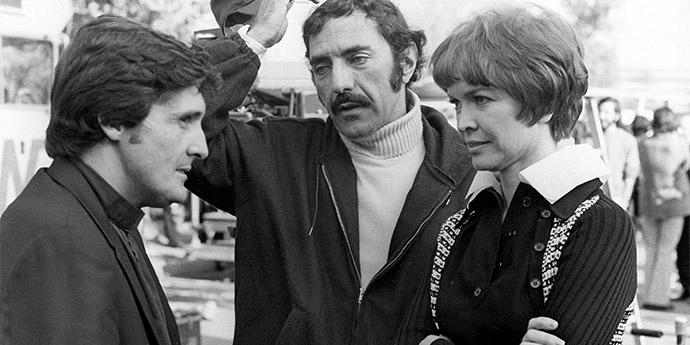
Keach would get his chance to appear in a Blatty film years later when he headlined The Ninth Configuration.
Jane Fonda, Audrey Hepburn and Anne Bancroft were all considered for the part of Chris MacNeil, as was Blatty’s former neighbor Shirlie McClane who was supposedly Blatty’s inspiration for the character.
MacLaine, however, had already starred in a similar film two years earlier, The Possession OF Joel Delaney, and was ruled out, opening the door for Ellen Burstyn, who had cold-called Friedkin and declared that she was going to play the part.
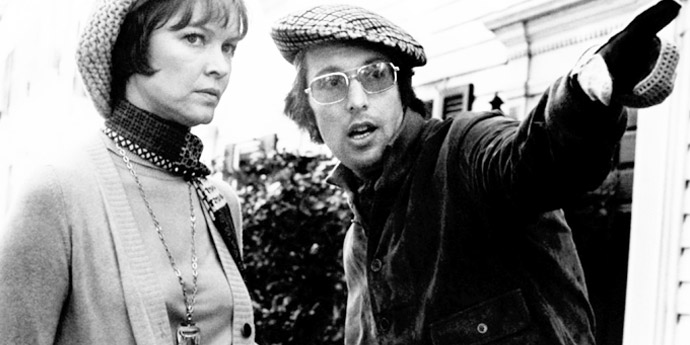
Filming took place on location in Iraq and Georgetown, but many interior locations were shot in Manhattan studios. The film crew built a false front and added an extension to the house in Georgetown to bring it closer to the street, and closer to the famed “Exorcist steps”, as they are now known since the closest window to the steps was roughly 40 feet away. Friedkin was given a little over 100 days to shoot the film but it ended up taking more than double that.
A stickler for realism and authenticity, Friedkin became infamous for startling his actors into giving the responses he wanted.
When Father Karras is listening to the audio tapes of Regan speaking backward, Friedkin fired a shotgun near Jason Miller to startle him when the phone rang.
“Friedkin’s a lunatic. I told him I’d knock him out if he ever pulled that shit again.”

After the crucifix masturbation scene, when Chris is backhanded across the room by Regan, Ellen Burstyn asked Friedkin to have the stunt coordinator ease up on her during the scene, as the rig that was pulling her across the room was hurting her back.
Friedkin agreed, but, according to Burstyn, Friedkin silently signaled them to “Let her have it”. Friedkin got the pained reaction he was looking for, but Burstyn claims that she has suffered terrible back problems ever since as a result.
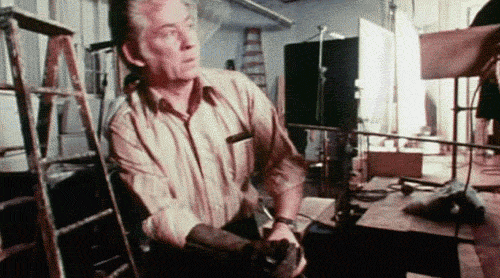
Reverend William O’Malley, who portrayed Father Dyer, wasn’t giving Friedkin the reaction he wanted while giving Father Karras his last rites, so Friedkin took him aside to offer some advice. O’Malley told Friedkin that he was doing his best, but he wasn’t an actor.
Friedkin “slapped the shit” out of him, called “Action”, and got the shaky, breathless performance that he wanted.
It was a trick “the old-timers used to use all the time,” Friedlin Claimed. “He thanked me for it and blessed me for it.”
Friedkin tried using electronically altered audio of Linda Blair as the voice of the Demon, Pazuzu, but felt that the exorcism scenes didn’t carry the appropriate weight, so he sought out actress Mercedes McCambridge, who supposedly smoke and drank excessively to roughen up her voice, and performed her scenes tied to a chair in the studio.
McCambridge agreed to forgo a screen credit, to preserve the mystique of the Demon’s voice, but changed that tune once she saw what a hit the film was. She filed a grievance with The Screen Actors Guild, forcing Warner Bros. to hastily add her name to the prints.
The famous shot of Father Merrin arriving at the house was based on Rene Magritte’s 1954 painting “Empire of Light”, and was the first scene that actor Max Von Sydow shot. Sydow was only in his early forties when he made the film, but Dick Miller’s amazing make-up and prosthetic work led many viewers to assume that he was much older.
Friedkin hired film composer Lalo Schifrin to compose the film’s score but was so dissatisfied that he supposedly gathered up the tapes that Schifrin had recorded and threw them into the Warner Bros. parking lot. Friedkin ended up using preexisting music for the film’s minimal score.
The picture opened to massive box office, with sold-out theaters and around-the-block lines becoming the norm during the first few weeks of release, and went on to become the first horror film to be nominated for Best Picture at The Academy Awards.
It remains, over forty years later, the scariest film ever made.
EDITOR’S NOTES
The Exorcist, one of the most popular movies of all time, is unquestionably the most popular horror movie of all time. It currently stands at #9 on the All-Time Adjusted Domestic charts over one hundred slots ahead of House Of Wax.
The movie sold more tickets than The Force Awakens or Avatar, at a time when the US had 130 million fewer people.
It also remains one of the most discussed films in cinema history. Here are a few select videos throughout the ages:
https://www.youtube.com/watch?v=0Xqh4GldIjI

